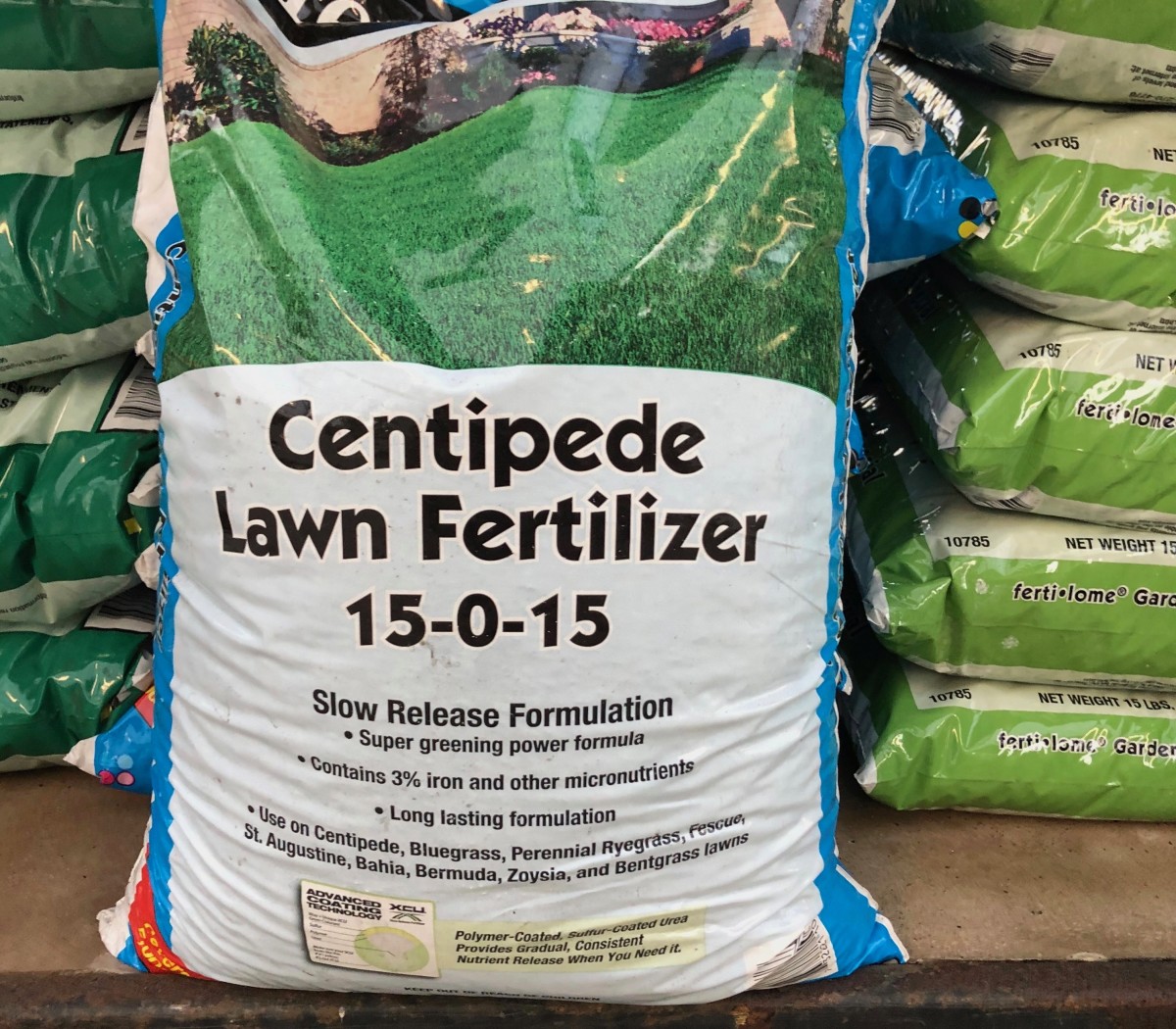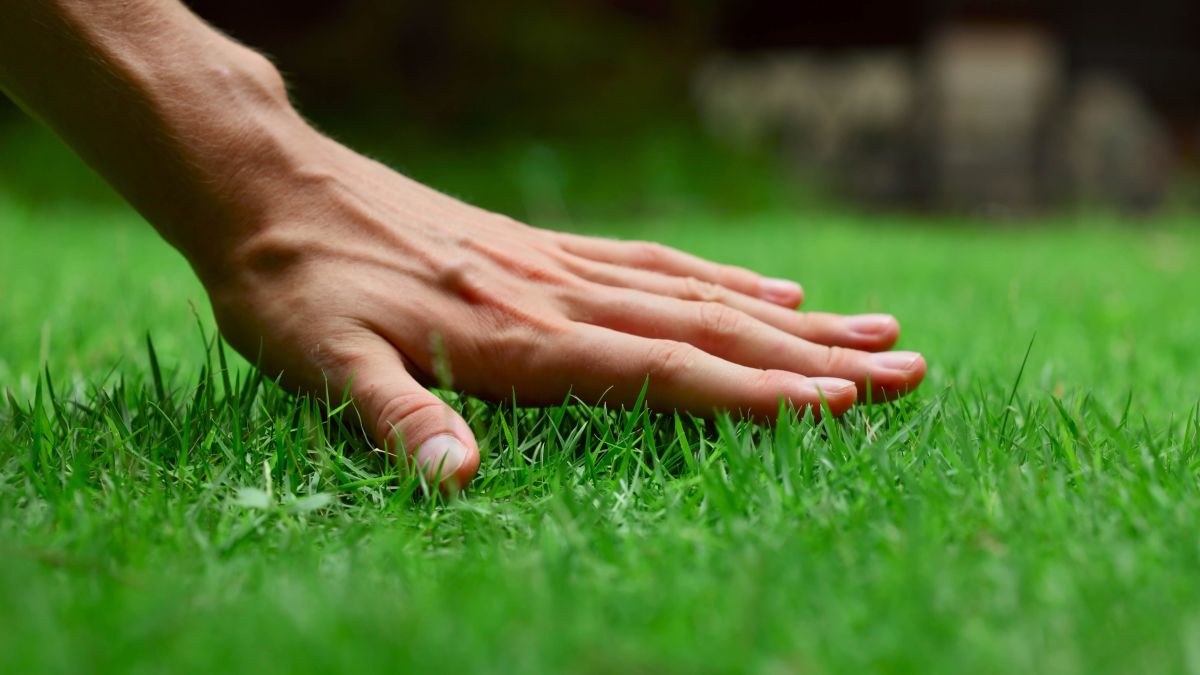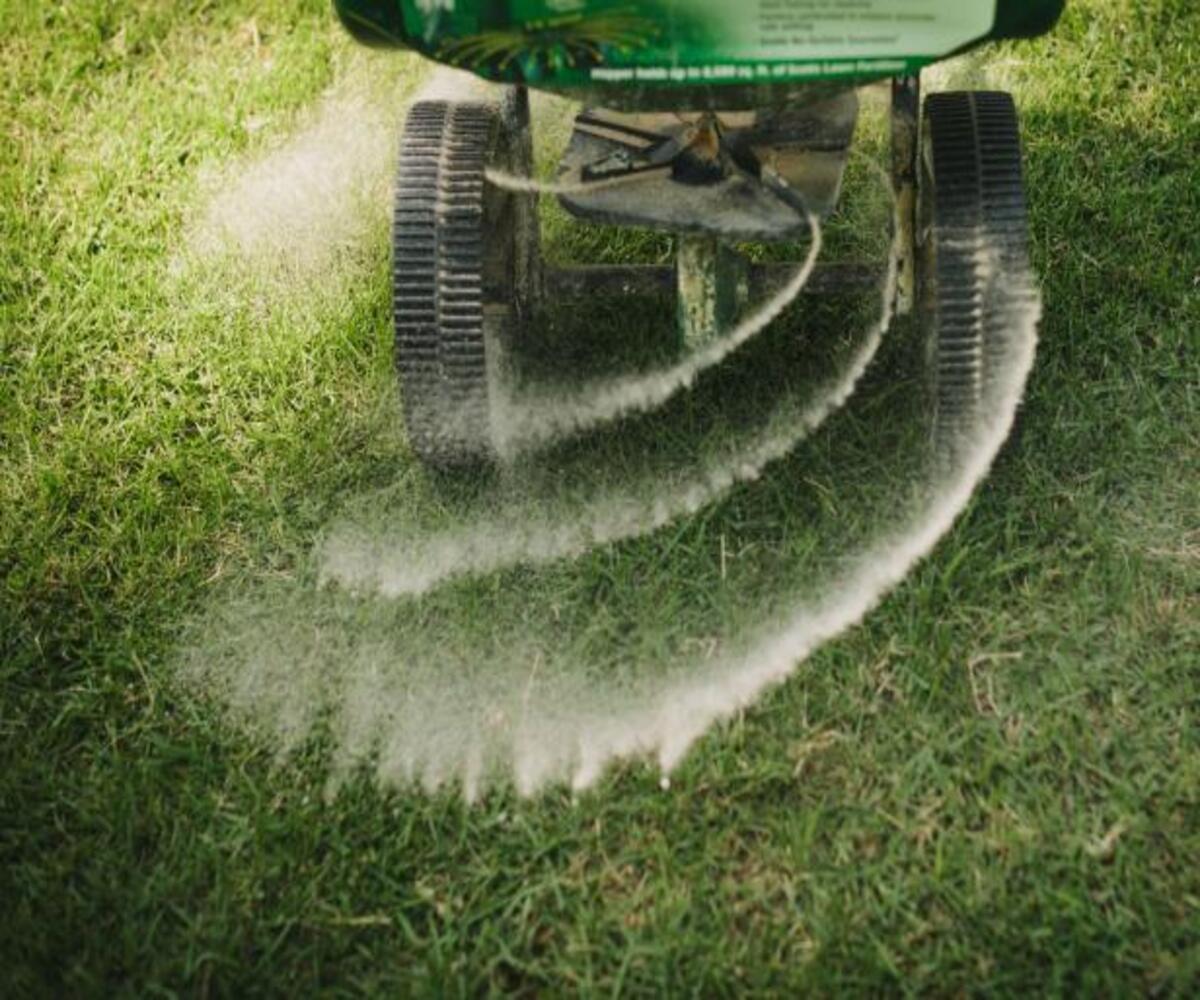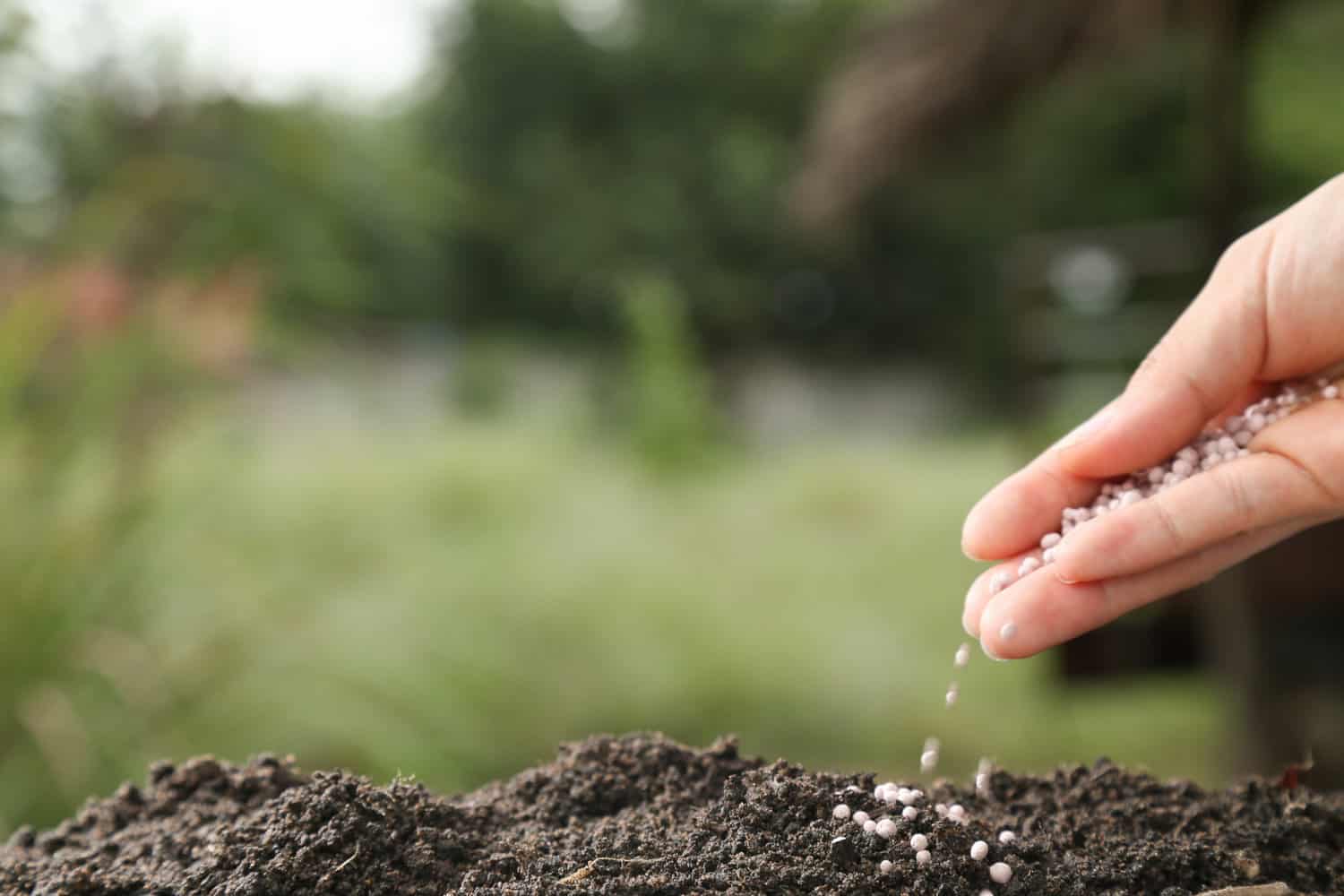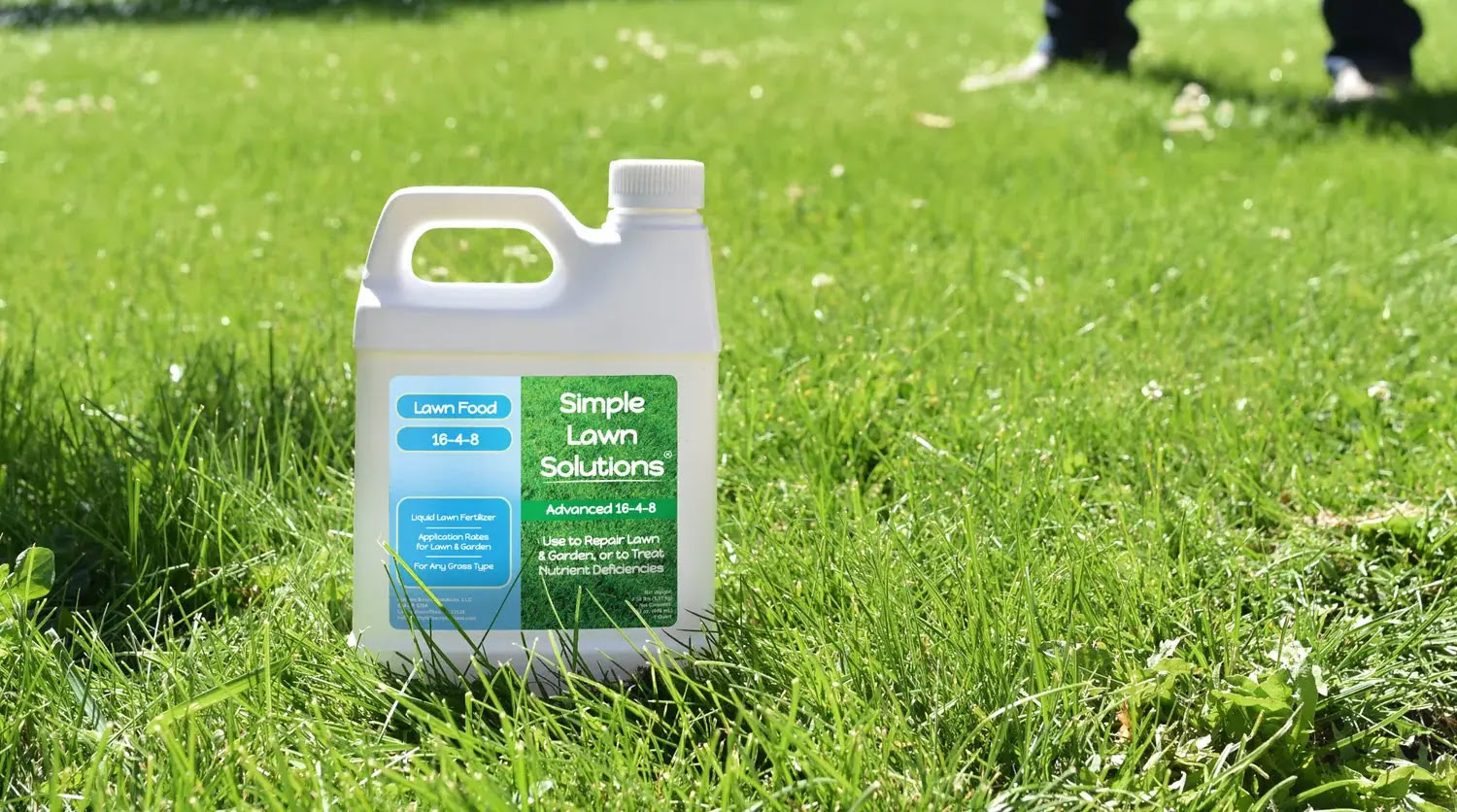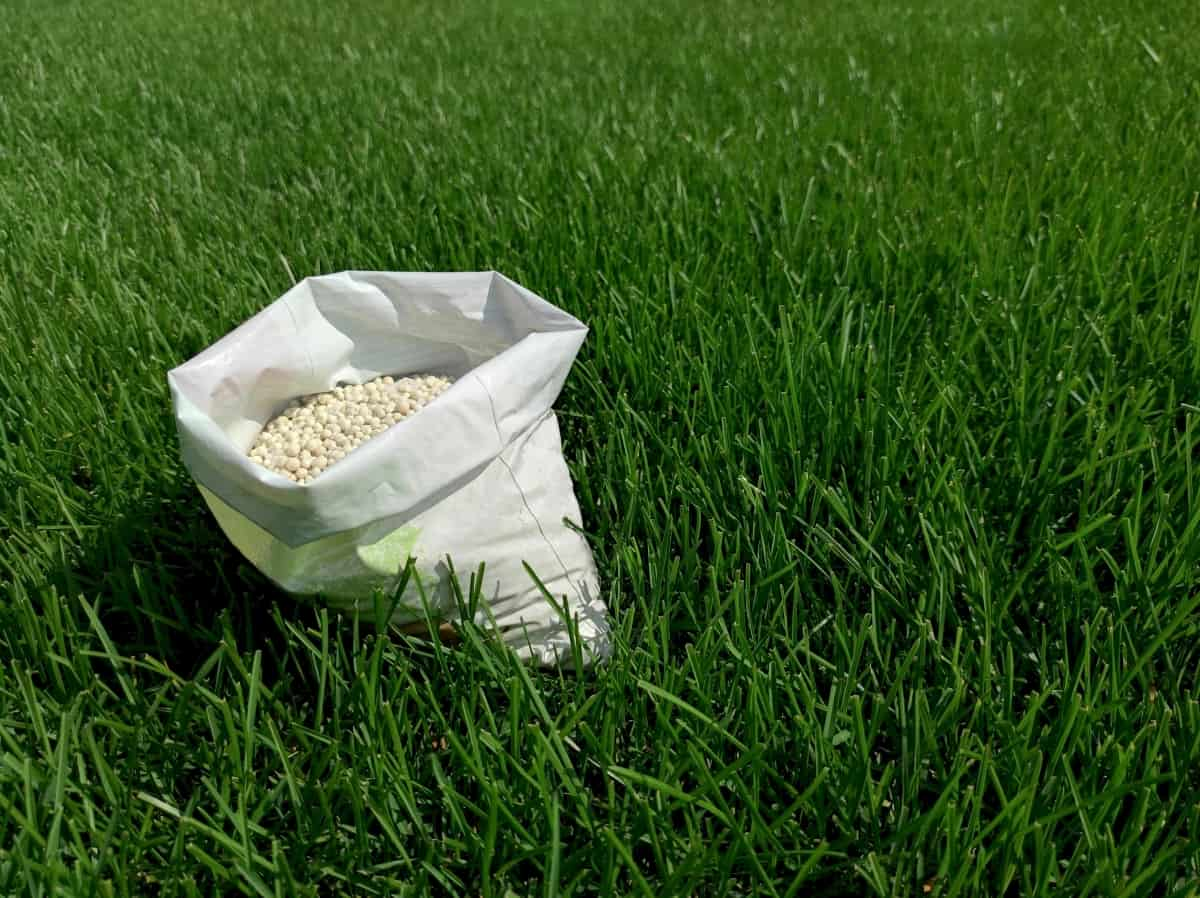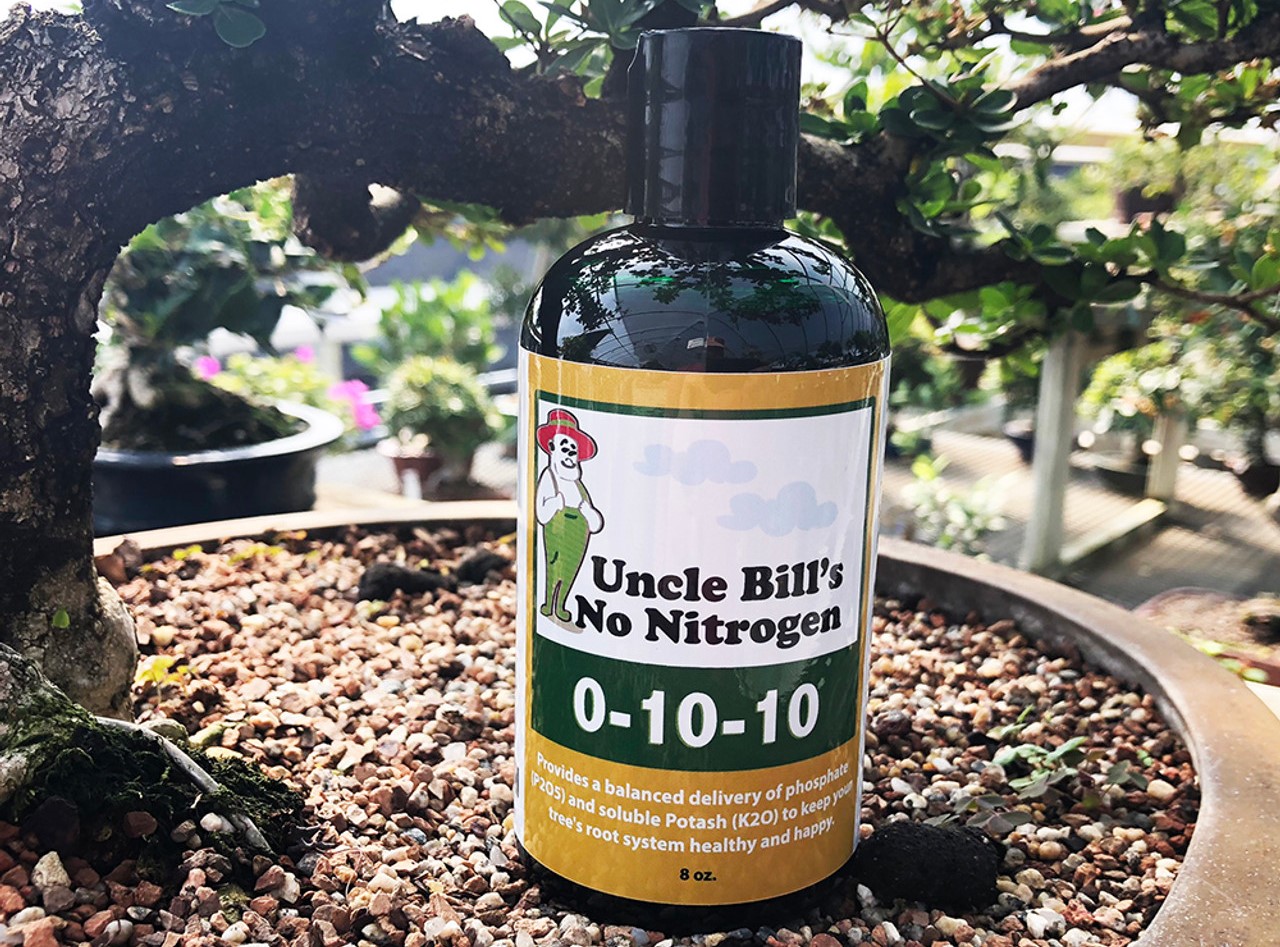Home>Gardening News and Trends>What Fertilizer Is Good For St Augustine Grass
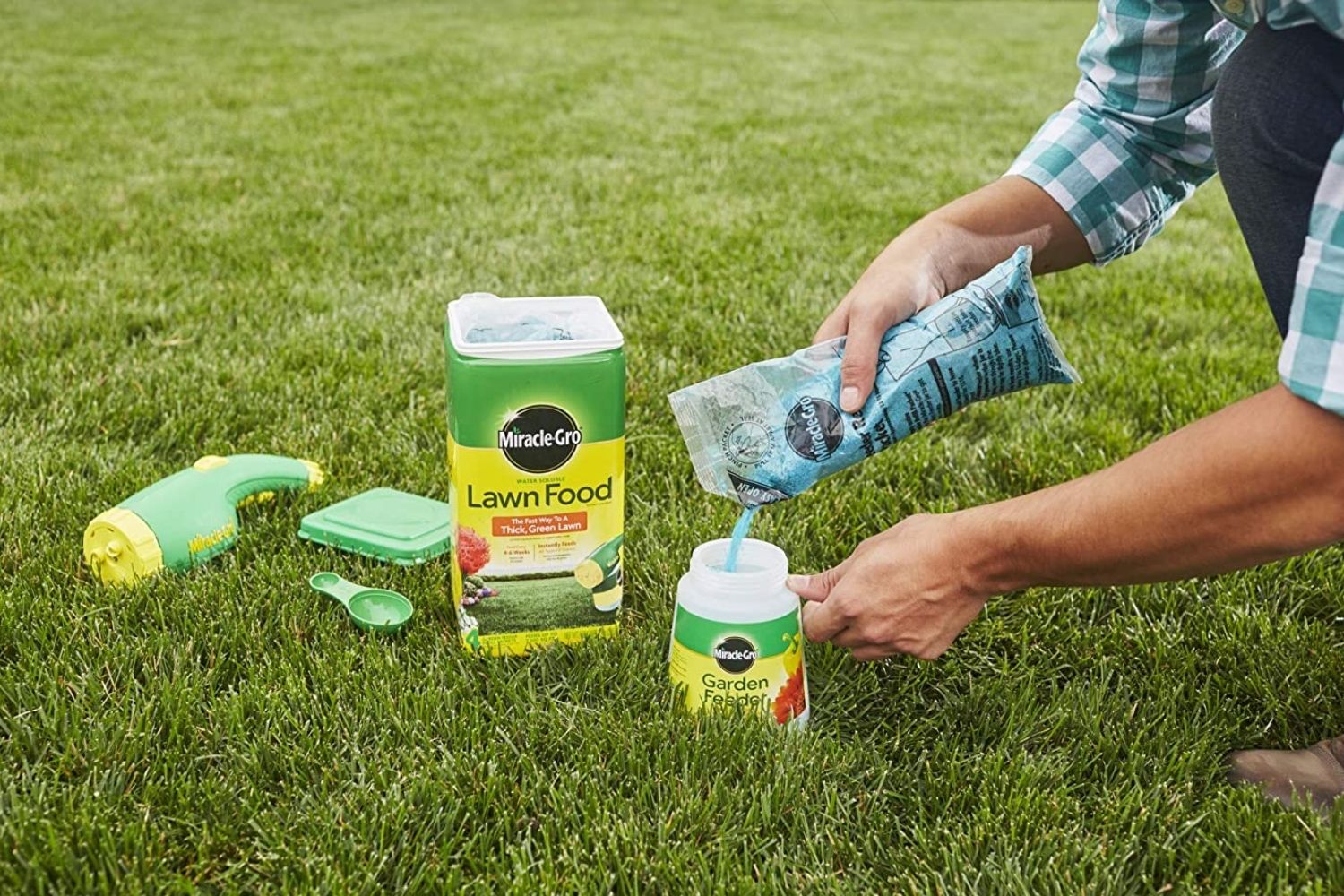

Gardening News and Trends
What Fertilizer Is Good For St Augustine Grass
Modified: January 22, 2024
Discover the latest news on what fertilizer is good for St Augustine grass. Find expert recommendations and tips for a healthy and vibrant lawn.
(Many of the links in this article redirect to a specific reviewed product. Your purchase of these products through affiliate links helps to generate commission for Chicagolandgardening.com, at no extra cost. Learn more)
Table of Contents
- Introduction
- Understanding St Augustine Grass
- Role of Fertilizer in Lawn Care
- Factors to Consider when Choosing Fertilizer for St Augustine Grass
- Best Types of Fertilizer for St Augustine Grass
- Application Techniques for Fertilizing St Augustine Grass
- Common Mistakes to Avoid when Fertilizing St Augustine Grass
- Frequently Asked Questions about Fertilizing St Augustine Grass
- Conclusion
Introduction
Welcome to our comprehensive guide on the best fertilizer for St Augustine grass. If you’re a homeowner or a garden enthusiast who wants to maintain a lush, green lawn, then you’ve come to the right place.
St Augustine grass is a popular choice for lawns due to its beautiful appearance and ability to thrive in warm climates. However, like any other type of grass, St Augustine requires proper care and maintenance to stay healthy and vibrant.
One of the most crucial aspects of lawn care is fertilization. Fertilizer provides essential nutrients that St Augustine grass needs to grow strong and resist diseases. However, choosing the right fertilizer can be quite overwhelming, as there are numerous options available on the market.
In this guide, we will delve into the world of St Augustine grass and help you understand its specific needs when it comes to fertilization. We will explore the various factors you should consider when selecting fertilizer, highlight the best types of fertilizer for St Augustine grass, and provide practical tips for proper application.
Whether you’re a beginner or an experienced gardener, this article aims to equip you with the knowledge and tools you need to give your St Augustine grass the best care possible. So, let’s dive in and discover the secrets to a vibrant and healthy St Augustine lawn!
Understanding St Augustine Grass
St Augustine grass, also known as Stenotaphrum secundatum, is a warm-season grass that is widely used for lawns in the southern United States. It is prized for its dense growth and vibrant green color, making it a popular choice for homeowners looking to create a lush and attractive lawn.
This grass variety has a coarse texture with broad, dark green blades that can grow up to 6 inches in length. St Augustine grass spreads through stolons, which are above-ground runners that help it establish and fill in bare patches. It thrives in hot and humid climates, making it an excellent choice for Southern regions.
One of the key features of St Augustine grass is its ability to tolerate shade. While it prefers full sun, it can still grow reasonably well in areas with partial shade, although it may become thin and less vibrant compared to areas with full sunlight.
St Augustine grass has a moderate to high maintenance requirement. It requires regular watering and has a relatively high nitrogen requirement to maintain its lush appearance. It also benefits from periodic dethatching and regular mowing to keep it looking neat and healthy.
It’s important to note that St Augustine grass is sensitive to cold weather and can turn brown or go dormant when temperatures drop. However, it typically recovers once temperatures rise and warmer conditions return.
Understanding the characteristics and growth habits of St Augustine grass is crucial for determining its specific care needs, including fertilization. By gaining a deeper understanding of this grass variety, you can provide it with the optimal conditions and inputs for it to thrive and create a beautiful lawn that you can be proud of.
Role of Fertilizer in Lawn Care
Fertilizer plays a crucial role in maintaining a healthy and vibrant lawn, and St Augustine grass is no exception. Understanding the importance of fertilizer is key to providing the nutrients that your grass needs to thrive.
One of the primary purposes of fertilizer is to replenish the nutrients that may be lacking in the soil. St Augustine grass has specific nutrient requirements, including nitrogen (N), phosphorus (P), and potassium (K), often referred to as NPK. These nutrients are essential for various aspects of plant growth and development.
Nitrogen is particularly important for St Augustine grass as it aids in the production of chlorophyll, the pigment responsible for the grass’s green color. Nitrogen also promotes vigorous leaf and stem growth, resulting in a dense and lush lawn.
Phosphorus is essential for root development and helps the grass establish a strong foundation. It also contributes to the overall resilience and ability of St Augustine grass to withstand stressors such as foot traffic and drought.
Potassium is involved in various metabolic processes within the grass, including nutrient uptake, water regulation, and disease resistance. It plays a vital role in overall plant health and enhances the grass’s ability to recover from stress.
In addition to supplying essential nutrients, fertilizer also helps to improve soil fertility. Over time, the repeated application of fertilizer can improve the soil’s organic matter content, soil structure, and nutrient-holding capacity. This, in turn, enhances the overall health of the grass and supports its long-term growth.
Properly fertilizing St Augustine grass can also help prevent and control weed growth. A healthy, well-fed lawn is more resilient and can outcompete weeds, reducing the need for chemical weed control methods.
It is important to apply fertilizer at the appropriate times throughout the growing season. This ensures that the grass receives a steady supply of nutrients when it needs them the most. Additionally, following the recommended dosage and application frequency helps prevent nutrient imbalances or excessive growth that can lead to other problems such as thatch buildup or increased susceptibility to diseases.
By understanding the role of fertilizer in lawn care and providing the necessary nutrients in a timely manner, you can promote the growth, color, and overall health of your St Augustine grass, resulting in a beautiful and thriving lawn.
Factors to Consider when Choosing Fertilizer for St Augustine Grass
Choosing the right fertilizer for your St Augustine grass is essential to ensure optimal growth, vibrant color, and overall health. Here are some key factors to consider when selecting a fertilizer:
- Nutrient Ratio: Look for a fertilizer with a balanced nutrient ratio specifically formulated for St Augustine grass. The ideal ratio for NPK is typically around 3:1:2, which means three parts nitrogen, one part phosphorus, and two parts potassium. This balanced formula provides the necessary nutrients for both foliage growth and root development.
- Solubility: Consider the solubility of the fertilizer. Water-soluble fertilizers are quick-release, delivering nutrients to the grass immediately. They are ideal for a quick green-up or addressing specific nutrient deficiencies. However, they require more frequent applications. Slow-release or controlled-release fertilizers provide a steady release of nutrients over time, reducing the frequency of applications and promoting longer-lasting results.
- Slow-Release Nitrogen: St Augustine grass benefits from a significant portion of slow-release nitrogen in the fertilizer. Slow-release nitrogen is released gradually, providing sustained nutrition to the grass without causing excessive growth or leaching into groundwater.
- Micro and Macronutrients: Consider a fertilizer that includes essential micronutrients such as iron, manganese, and zinc. These micronutrients are vital for maintaining the grass’s color and overall health. Additionally, ensure the fertilizer contains other macronutrients like sulfur and calcium, which contribute to the grass’s overall nutrient balance.
- Granular or Liquid: Both granular and liquid fertilizers are suitable options for St Augustine grass. Granular fertilizers are easier to handle and apply, particularly for larger areas. They release nutrients gradually and are more resistant to leaching. Liquid fertilizers, on the other hand, are quickly absorbed by the grass through the foliage and can provide a rapid green-up. They are ideal for quick fixes and spot treatments.
- Seasonal Needs: Consider the specific needs of St Augustine grass based on the time of year. In the warmer months, the grass requires higher nitrogen levels to support its active growth. During the cooler months, a fertilizer with an increased ratio of phosphorus and potassium helps strengthen the grass’s roots and promotes winter hardiness.
It’s important to read the label carefully when selecting a fertilizer to ensure it is suitable for St Augustine grass and follows the recommended application rates. Remember that applying too much fertilizer can lead to nutrient imbalances, excessive growth, and potential harm to the environment. Following proper fertilization guidelines will help you maintain a healthy and vibrant St Augustine lawn.
Best Types of Fertilizer for St Augustine Grass
When it comes to fertilizing St Augustine grass, choosing the right type of fertilizer is essential for promoting healthy growth and vibrant color. Here are some of the best types of fertilizer to consider:
- Complete Fertilizer: Look for a complete fertilizer specifically formulated for St Augustine grass. A complete fertilizer contains all three primary nutrients—nitrogen (N), phosphorus (P), and potassium (K)—in the appropriate ratio for St Augustine grass, such as 3:1:2. This balanced formula ensures that your grass receives all the essential nutrients it needs for optimal growth, color, and overall health.
- Slow-Release Fertilizer: Slow-release fertilizers are an excellent choice for St Augustine grass as they provide a steady release of nutrients over time. This gradual release ensures that the grass receives a consistent supply of nutrients without causing excessive growth or leaching. Slow-release fertilizers are ideal for maintaining a healthy and dense lawn.
- Organic Fertilizer: Organic fertilizers are becoming increasingly popular for their environmentally friendly nature. Look for organic fertilizer options that are specially formulated for St Augustine grass. These fertilizers are derived from natural sources, such as compost, manure, or plant-based materials. They provide a slow and steady release of nutrients while also improving soil health and promoting beneficial microbial activity.
- Iron-Rich Fertilizer: St Augustine grass can sometimes suffer from iron deficiency, resulting in yellowing or chlorotic leaves. To address this issue, consider using an iron-rich fertilizer. These fertilizers contain a higher concentration of iron, which helps to enhance the grass’s green color and prevent yellowing. Iron-rich fertilizers can be particularly beneficial in areas with alkaline soils that are prone to iron deficiencies.
- Pre-Emergent Fertilizer: Pre-emergent fertilizers are a great option for preventing weed growth alongside providing nutrients to your St Augustine grass. These fertilizers contain herbicides that create a barrier in the soil, preventing weed seeds from germinating. This helps to maintain a weed-free lawn while also supplying essential nutrients to the grass.
Remember to carefully read the label and follow the manufacturer’s instructions when applying any fertilizer to your St Augustine grass. Consider factors such as your lawn’s specific needs, the grass’s growth stage, and the recommended application rates. By choosing the best type of fertilizer for your St Augustine grass, you can ensure that your lawn receives the right nutrients for a healthy and thriving appearance.
Application Techniques for Fertilizing St Augustine Grass
Proper application techniques are crucial for effectively fertilizing your St Augustine grass and ensuring that the nutrients reach the grass’s root zone. Here are some essential tips to consider:
- Timing: Apply fertilizer to your St Augustine grass during its active growth phase. For most regions, this occurs in the spring through fall. Avoid fertilizing during the winter months when the grass is dormant and not actively growing.
- Soil Moisture: Before applying fertilizer, ensure that the soil is adequately moist. If the soil is dry, water your lawn a day or two prior to fertilizing. Applying fertilizer to dry soil can potentially burn the grass and reduce its effectiveness.
- Spread Pattern: Use a fertilizer spreader to evenly distribute the fertilizer across your lawn. This ensures that the nutrients are applied uniformly, preventing uneven growth and potential nutrient deficiencies or excesses. Follow the manufacturer’s instructions on the spreader settings to achieve the appropriate coverage.
- Overlap: When applying fertilizer, make sure to overlap each pass with the spreader to avoid missing any areas. This helps ensure even distribution and prevents patchy growth. Pay extra attention to edges, corners, and hard-to-reach areas to avoid uneven application.
- Watering: After applying fertilizer, water your lawn thoroughly. This helps activate the fertilizer and allows the nutrients to penetrate the soil and reach the grass roots. Watering immediately after fertilization also helps to prevent potential fertilizer burn by diluting any concentrated residues on the grass blades.
- Post-Fertilization Care: Avoid mowing your lawn immediately after fertilization. Allow the grass to absorb the nutrients and recover before cutting. Additionally, keep foot traffic to a minimum for a few days after fertilization to prevent compacting the soil and disrupting the fertilizer distribution.
- Follow Package Instructions: Always read and follow the instructions provided on the fertilizer package. It will specify the recommended application rates, frequency, and any special instructions unique to the product. Following these guidelines ensures that you apply the correct amount of fertilizer for your St Augustine grass.
By following these application techniques, you can ensure that your St Augustine grass receives the right amount of fertilizer in a uniform manner. This promotes consistent growth, healthy root development, and a vibrant lawn throughout the growing season.
Common Mistakes to Avoid when Fertilizing St Augustine Grass
Fertilizing your St Augustine grass is crucial for its overall health and appearance. However, there are common mistakes that you should avoid to ensure the best results. Here are some pitfalls to watch out for:
- Over-Fertilizing: Applying too much fertilizer can lead to excessive growth, weak root development, and nutrient imbalances. Follow the recommended application rates provided on the fertilizer package and avoid the temptation to apply more in hopes of faster results.
- Under-Fertilizing: On the other hand, under-fertilizing can result in nutrient deficiencies, slow growth, and weak grass. Make sure to apply the appropriate amount of fertilizer according to the recommended rates and schedules to provide your St Augustine grass with the necessary nutrients for its optimal growth.
- Fertilizing at the Wrong Time: Timing is crucial when it comes to fertilizing St Augustine grass. Avoid fertilizing during the winter months when the grass is dormant and not actively growing. Apply fertilizer during the grass’s active growth phase, typically in the spring through fall, to promote healthy development.
- Uneven Application: Applying fertilizer unevenly can lead to patchy growth and nutrient deficiencies in certain areas. Use a fertilizer spreader and apply the fertilizer in a consistent and overlapping pattern to ensure even distribution across your lawn.
- Fertilizing on Dry Soil: Applying fertilizer to dry soil can potentially burn the grass and reduce its effectiveness. Ensure that the soil is adequately moist before fertilizing by watering your lawn a day or two prior to application.
- Using the Wrong Fertilizer: Not all fertilizers are suitable for St Augustine grass. Using the wrong type or formulation can result in nutrient imbalances or inadequate nutrient supply. Choose a fertilizer specifically formulated for St Augustine grass and follow the recommended nutrient ratios for optimal results.
- Not Watering After Fertilizing: Watering your lawn after fertilization is crucial to activate the nutrients and ensure they reach the grass’s root zone. Failure to water can result in ineffective use of the fertilizer, leading to poor absorption and limited benefits.
- Ignoring Soil pH: St Augustine grass prefers slightly acidic soil conditions. Ignoring soil pH levels can impact the grass’s ability to absorb nutrients efficiently. Test your soil’s pH levels and adjust as needed to create an optimal environment for your St Augustine grass to thrive.
- Neglecting Environmental Factors: Consider environmental conditions such as temperature, rainfall, and sunlight when fertilizing. Adjust your fertilization schedule or the type of fertilizer based on these factors to ensure the nutrients are utilized effectively by the grass.
By avoiding these common mistakes, you can maximize the benefits of fertilizing your St Augustine grass and maintain a healthy and vibrant lawn. Take the time to properly plan your fertilization schedule, choose the right fertilizer, and follow the recommended application techniques for optimal results.
Frequently Asked Questions about Fertilizing St Augustine Grass
Here are some common questions that homeowners often have about fertilizing St Augustine grass:
- How often should I fertilize my St Augustine grass?
- When is the best time to fertilize St Augustine grass?
- Is it necessary to water after fertilizing?
- Can I fertilize my St Augustine grass too much?
- Should I use a slow-release or quick-release fertilizer?
- Can I use organic fertilizer on St Augustine grass?
- What should I do if I accidentally apply too much fertilizer on my lawn?
- Can I fertilize my St Augustine grass when it is dormant?
The frequency of fertilization depends on various factors such as the specific fertilizer used, the season, and the condition of your lawn. As a general rule, St Augustine grass should be fertilized every 6-8 weeks during the active growing season, typically from spring to fall.
The best time to fertilize St Augustine grass is during its active growing season. For most regions, this is typically from early spring to late fall. Avoid fertilizing during the winter months when the grass is dormant and not actively growing.
Yes, it is necessary to water your lawn after fertilizing. Watering helps activate the fertilizer and helps the nutrients penetrate the soil and reach the grass’s roots. It also helps prevent potential fertilizer burn by diluting any concentrated residues on the grass blades.
Yes, over-fertilizing can have negative effects on St Augustine grass. It can lead to excessive growth, weak root development, and nutrient imbalances. Follow the recommended application rates and schedules provided on the fertilizer package to avoid over-fertilization.
Both slow-release and quick-release fertilizers can be used for St Augustine grass, depending on your specific needs. Slow-release fertilizers provide a steady release of nutrients over time, resulting in longer-lasting results and reduced frequency of application. Quick-release fertilizers provide a rapid green-up but may require more frequent applications.
Yes, organic fertilizers can be used on St Augustine grass. Organic fertilizers derived from natural sources, such as compost or manure, provide slow and steady release of nutrients. They also improve soil health and promote beneficial microbial activity.
If you accidentally apply too much fertilizer, water your lawn thoroughly to help flush out the excess nutrients. This helps prevent the grass from getting burned and allows the excess fertilizer to leach deeper into the soil where it can be absorbed over time. It’s important to avoid over-watering as well, as this can lead to nutrient leaching and environmental pollution.
No, you should not fertilize St Augustine grass when it is dormant, typically during winter. Fertilizing during dormancy is ineffective as the grass is not actively growing and cannot absorb and utilize the nutrients efficiently. It’s best to wait until the grass’s active growth phase in the spring before fertilizing.
These frequently asked questions provide helpful insights into the key considerations and best practices when fertilizing St Augustine grass. Remember, each lawn has unique needs, so it’s important to assess your specific situation and consult with local experts for personalized recommendations.
Conclusion
Fertilizing St Augustine grass is essential for maintaining a lush, green lawn that you can be proud of. By understanding the specific needs of St Augustine grass and implementing proper fertilization practices, you can promote healthy growth, vibrant color, and overall resilience.
Throughout this guide, we have explored various aspects of fertilizing St Augustine grass, from understanding its unique characteristics to choosing the right fertilizer and applying it correctly. We have emphasized the importance of providing the necessary nutrients, such as nitrogen, phosphorus, and potassium, in the appropriate ratios and at the right times.
Factors such as nutrient solubility, application techniques, and environmental considerations play critical roles in achieving successful fertilization results. It’s important to avoid common mistakes, such as over-fertilizing, under-fertilizing, and uneven application, to ensure the health and longevity of your St Augustine lawn.
Remember to select the best type of fertilizer for St Augustine grass, considering its specific nutrient requirements and your lawn’s unique conditions. Organic fertilizers, slow-release options, and iron-rich formulations can provide excellent results, depending on your lawn’s needs and environmental factors.
Applying fertilizer at the right time, watering adequately, and following proper post-fertilization care are all integral parts of the process. By integrating these practices into your lawn care routine, you can create an environment in which your St Augustine grass thrives and remains beautiful throughout the growing season.
Lastly, don’t forget to consult with local experts and resources to tailor your fertilization approach to your specific region and lawn conditions. They can provide valuable insights and recommendations for fertilizing St Augustine grass effectively.
With the knowledge and guidance presented in this guide, you are equipped to nurture your St Augustine grass and create a vibrant, healthy lawn that you can enjoy for years to come.
